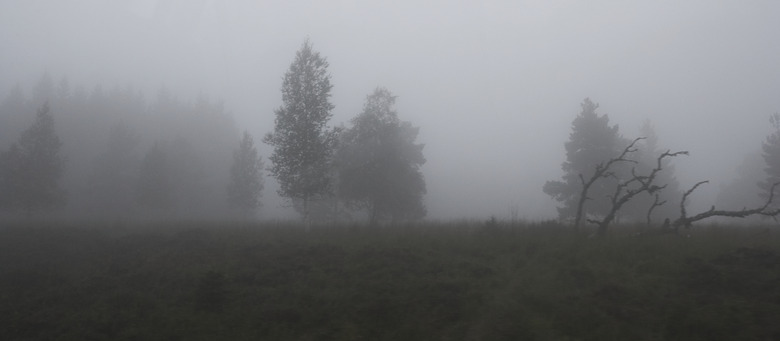How Is The Forest Affected By Acid Rain?
As early as the 1960s, scientists observed evidence of tree damage from acid rain and other environmental pollutants in the Black Forest of Germany. First termed Waldsterben, or tree death, this phenomenon caused damage to nearly half of all trees in the Black Forest by 1990. Acid rain harms wildlife, and while most acid precipitation studies focus on aquatic animals, the forests are not immune to the effects of acid rain.
Acid Rain Definition
Acid Rain Definition
Acid rain is actually a general term for any sort of acidic precipitation. This means the acid rain definition includes rain, snow, fog, hail and/or dust that contains acidic compounds. Those acidic compounds are almost always nitric or sulfuric acid.
Acid rain is caused when SO2 (sulfur dioxide) or NOx (any form of nitrous oxide) enter the atmosphere. This is usually through the burning of fuels, industrial emissions, oil refineries, power generators and other manmade machinery/manufacturing. These then combine with water and other atmospheric gases to grate sulfuric and nitric acid within the precipitation that then falls to the ground from the atmosphere.
The source of these emissions don't need to be close in proximity to cause acid rain: wind and water currents can carry these pollutants across the globe and cause acid precipitation in far away places. The pH of acid precipitation is usually between 4.2 and 4.4 (whereas water/rain is usually close to a neutral pH of 7).
Soil
Soil
During rainfall, some water soaks into the forest soil; when the rainfall itself is acidic, it can cause the acidity of the soil to increase. Some soils include a natural buffering capacity, which means the soil neutralizes the acidity in the soil. These soils are naturally alkaline, but the buffering abilities can be damaged through frequent acid deposition.
Those soils that have less buffering capacity are more susceptible to the other harmful effects of acid rain. Acid rain can kill plants and other producers that are at the base of the food chain, which can lead to a chain reaction of effects up to the top predators. In fact, acid rain was initially called "tree death" because of this effect acid rain had on plants.
Farmers are often forced to add crushed limestone or other fertilizers to help increase the soil's buffering capacity and reduce the acidity.
Nutrient Leaching
Nutrient Leaching
In addition to increasing the acidity in soil, acid rain leaches cations like potassium, calcium, magnesium and sodium from the soil and washes them away, making these nutrients unavailable to plants. Known as soil depletion, this process reduces the fertility of the soil. When acid rain removes those nutrients completely, the soil is unable to support plant life. Acid rain also releases substances like aluminum, which are toxic to plants.
Leaf Damage
Leaf Damage
Forests at high elevations, such as those in the Great Smoky Mountains, are greatly affected not only by acid rain but also because of exposure to acidic clouds and fog. With frequent exposure to acidic fog, the waxy coating of leaves and needles of trees may weaken and be more prone to damage from insects, disease or cold weather.
Indirect Effects
Indirect Effects
When plant life cannot be supported, animal life suffers as well because of the loss of habitat or food sources. Biodiversity might decrease, meaning the number of distinct environments as well as the number of species that reside in those environments could be lost. Species within a given habitat rely on each other.
For example, low levels of calcium in soil caused by acid rain might decrease the number of earthworms or other insects that birds need for nourishment; additionally, when snails are not present, female birds do not get enough calcium for healthy eggs. As a result, the populations of these birds also decrease.
Cite This Article
MLA
Batema, Cara. "How Is The Forest Affected By Acid Rain?" sciencing.com, https://www.sciencing.com/forest-affected-acid-rain-4475/. 30 July 2019.
APA
Batema, Cara. (2019, July 30). How Is The Forest Affected By Acid Rain?. sciencing.com. Retrieved from https://www.sciencing.com/forest-affected-acid-rain-4475/
Chicago
Batema, Cara. How Is The Forest Affected By Acid Rain? last modified March 24, 2022. https://www.sciencing.com/forest-affected-acid-rain-4475/
